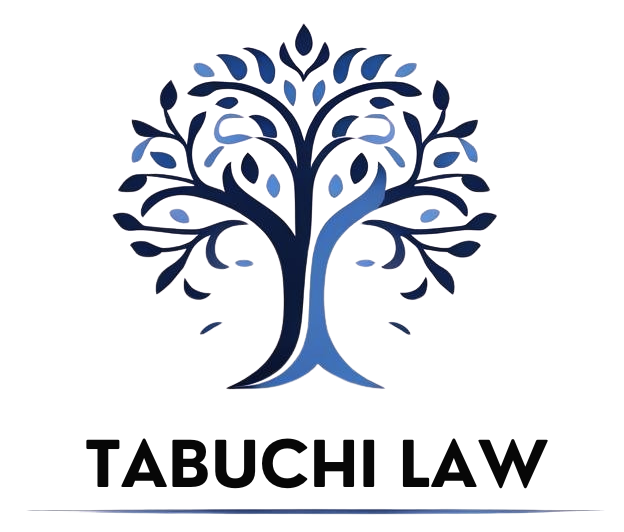You Got This! Easy Steps to Successfully End a Trust Agreement

Key Takeaways:
- The trust dissolution process in Canada can vary depending on the type of trust and the province or territory where it was established.
- Terminating a trust agreement may require the consent of the settlor, trustee, and beneficiaries, as well as compliance with legal requirements.
- In Ontario, revoking a trust is possible if the settlor has retained the right to do so, and specific procedures must be followed.
- Trustees have certain responsibilities, including managing the trust assets and distributions, which must be considered during the trust dissolution process.
- The legal requirements for dissolving a trust in Canada may involve court approval, distribution of assets, and consideration of the settlor's intentions and the beneficiaries' interests.
- Estate planning and trust law in Canada play a crucial role in the trust dissolution process, and it is advisable to seek legal advice.
Trust Dissolution in Canada: Your Legal Guide to Ending a Trust
Navigating the complex process of trust dissolution in Ontario can be daunting, but with the right legal guidance, it doesn't have to be. This comprehensive article will walk you through the key steps, requirements, and considerations for terminating a trust agreement, from the trustee's responsibilities to the settlor's intentions and the beneficiaries' consent. Whether you're a trustee, a settlor, or a beneficiary, this guide will provide you with the essential information you need to understand trust dissolution in Canada.
- What is Trust Dissolution?
- Reasons for Trust Dissolution
- The Trust Dissolution Process
- Trustee Responsibilities in Trust Dissolution
- Legal Requirements for Dissolving a Trust
- Settlor Intentions and Trust Termination
- Beneficiary Consent for Trust Dissolution
- Conclusion
What is Trust Dissolution?
Trust dissolution, also known as trust termination, is the legal process of ending a trust agreement in Canada. When a trust is dissolved, the trustee's responsibilities come to an end, and the trust's assets are distributed to the beneficiaries or returned to the settlor, depending on the terms of the trust and the applicable laws.
Well, here's the thing: trusts are powerful estate planning tools, but they're not meant to last forever. There are various reasons why a trust may need to be dissolved, and it's important for everyone involved – the trustee, the settlor, and the beneficiaries – to understand the process and their respective roles.
Reasons for Trust Dissolution
There are several common reasons why a trust may need to be dissolved in Canada. Some of the most frequent causes include:
- Fulfillment of the trust's purpose – When the trust has achieved its intended goal, such as providing for a beneficiary's education or supporting a charitable cause, it may be appropriate to dissolve the trust.
- Change in circumstances – If the trust's original purpose is no longer relevant or achievable due to changes in the beneficiaries' needs, the settlor's wishes, or the trust's assets, dissolution may be the best course of action.
- Trustee resignation or incapacity – If the trustee is unable or unwilling to continue administering the trust, the trust may need to be dissolved and the assets distributed.
- Beneficiary consent – In some cases, all of the trust's beneficiaries may agree to terminate the trust, particularly if they are of legal age and sound mind.
- Settlor revocation – Depending on the trust's terms and applicable laws, the settlor may have the right to revoke the trust and have the assets returned to them.
Regardless of the reason, it's crucial to follow the proper legal procedures when dissolving a trust in Ontario to ensure a smooth and compliant process.
The Trust Dissolution Process
The process of dissolving a trust in Canada can vary depending on the specific circumstances, but there are some general steps that are typically involved:
- Determine the grounds for dissolution – Carefully review the trust agreement and applicable laws to identify the valid reasons for terminating the trust.
- Notify all interested parties – Inform the trustee, the settlor (if still living), and all beneficiaries of the intent to dissolve the trust.
- Obtain necessary consents – Depending on the trust's terms and the specific situation, you may need to obtain consent from the settlor, the beneficiaries, or the court.
- Settle outstanding trust obligations – The trustee must ensure that all debts, taxes, and other liabilities associated with the trust are paid before distribution can occur.
- Distribute trust assets – Once all obligations are met, the trustee can distribute the remaining trust assets to the beneficiaries or the settlor, as outlined in the trust agreement.
- File final trust accounting – The trustee must prepare and file a final accounting of the trust's assets, income, and distributions with the appropriate authorities.
- Obtain court approval (if required) – In some cases, the trustee may need to obtain court approval for the trust dissolution and asset distribution.
- Terminate the trust – Once all the necessary steps are completed, the trust can be officially dissolved, and the trustee's responsibilities will come to an end.
It's important to note that the specific steps and requirements for trust dissolution in Canada may vary depending on the province or territory, the type of trust, and the individual circumstances of the case. Working with an experienced estate planning lawyer can help ensure that the process is handled correctly and efficiently.
Trustee Responsibilities in Trust Dissolution
The trustee plays a crucial role in the trust dissolution process. As the individual or institution responsible for administering the trust, the trustee has several key responsibilities when it comes to terminating the trust:
- Identifying the grounds for dissolution – The trustee must carefully review the trust agreement and applicable laws to determine the valid reasons for dissolving the trust.
- Notifying all interested parties – The trustee must inform the settlor (if still living), the beneficiaries, and any other relevant parties of the intent to dissolve the trust.
- Obtaining necessary consents – Depending on the trust's terms and the specific situation, the trustee may need to obtain consent from the settlor, the beneficiaries, or the court before proceeding with the dissolution.
- Settling outstanding obligations – The trustee must ensure that all debts, taxes, and other liabilities associated with the trust are paid before the trust assets can be distributed.
- Distributing trust assets – Once all obligations are met, the trustee can distribute the remaining trust assets to the beneficiaries or the settlor, as outlined in the trust agreement.
- Preparing and filing final accounting – The trustee must prepare and file a final accounting of the trust's assets, income, and distributions with the appropriate authorities.
- Obtaining court approval (if required) – In some cases, the trustee may need to obtain court approval for the trust dissolution and asset distribution.
- Terminating the trust – Once all the necessary steps are completed, the trustee can officially dissolve the trust and be released from their responsibilities.
It's crucial for the trustee to carry out these responsibilities with the utmost care and diligence to ensure a smooth and compliant trust dissolution process.
Legal Requirements for Dissolving a Trust
The legal requirements for dissolving a trust in Canada can vary depending on the province or territory, the type of trust, and the specific circumstances of the case. However, there are some general legal principles and requirements that apply to trust dissolution in Ontario:
- Trust agreement terms – The trust agreement itself may specify the conditions and procedures for terminating the trust, and these must be carefully followed.
- Applicable trust and estate laws – The relevant trust and estate laws in Ontario, such as the Trustee Act and the Succession Law Reform Act, will dictate the legal requirements for dissolving a trust.
- Beneficiary consent – In many cases, the consent of all the trust's beneficiaries is required for the trust to be dissolved, particularly if the beneficiaries are of legal age and sound mind.
- Court approval – Depending on the circumstances, the trustee may need to obtain court approval for the trust dissolution and asset distribution, especially if there are any disputes or unresolved issues.
- Tax and reporting requirements – The trustee must ensure that all applicable tax obligations and reporting requirements are met before the trust can be officially dissolved.
Failing to comply with the legal requirements for trust dissolution in Ontario can lead to complications, delays, and even legal challenges. It's essential to work closely with an experienced estate planning lawyer to ensure that the process is handled correctly and in accordance with the law.
Settlor Intentions and Trust Termination
When it comes to trust dissolution, the settlor's original intentions are of paramount importance. The settlor is the individual who created the trust and transferred the assets into it, and their wishes and expectations must be respected throughout the termination process.
If the trust agreement clearly outlines the conditions under which the trust can be dissolved, the trustee and other interested parties must adhere to those provisions. Even if the trust's purpose has been fulfilled or circumstances have changed, the settlor's original intentions should guide the decision to terminate the trust.
In some cases, the settlor may have reserved the right to revoke the trust and have the assets returned to them. This is known as a revocable trust, and the settlor's decision to exercise this right must be respected, provided that they have the legal capacity to do so.
Remember, the settlor's intentions are the foundation of the trust, and they should be given careful consideration throughout the trust dissolution process.
Beneficiary Consent for Trust Dissolution
Another crucial aspect of trust dissolution in Canada is the consent of the trust's beneficiaries. In many cases, the trust agreement or applicable laws will require the consent of all the beneficiaries, particularly if they are of legal age and sound mind, before the trust can be terminated.
The beneficiaries have a vested interest in the trust's assets and may have specific expectations or rights regarding the distribution of those assets. Obtaining their consent helps to ensure that the trust dissolution process is fair, transparent, and in line with their interests.
If there are any disagreements or disputes among the beneficiaries regarding the trust dissolution, it may be necessary to involve the court to resolve the issues and ensure that the process is carried out in a just and equitable manner.
Remember, the trust's beneficiaries have a significant stake in the trust's dissolution, and their consent and input should be carefully considered throughout the process.
Conclusion
Dissolving a trust in Canada can be a complex and nuanced process, but with the right legal guidance, it doesn't have to be overwhelming. By understanding the reasons for trust dissolution, the roles and responsibilities of the trustee, the legal requirements, and the importance of the settlor's intentions and beneficiary consent, you can navigate the trust termination process with confidence.
Whether you're a trustee, a settlor, or a beneficiary, it's crucial to work closely with an experienced estate planning lawyer to ensure that the trust dissolution is handled correctly and in accordance with the law. By doing so, you can protect the interests of all parties involved and bring the trust's lifecycle to a smooth and compliant conclusion.
FAQs
What are the most common reasons for trust dissolution in Canada?
The most common reasons for trust dissolution in Canada include the fulfillment of the trust's purpose, changes in circumstances that make the trust's original purpose no longer relevant or achievable, the resignation or incapacity of the trustee, the consent of all the trust's beneficiaries, and the settlor's right to revoke the trust.
How long does the trust dissolution process typically take in Ontario?
The timeline for trust dissolution in Ontario can vary depending on the complexity of the case and the specific requirements involved. In general, the process can take several weeks to several months, depending on factors such as the need for obtaining consents, settling outstanding obligations, and obtaining court approval (if required).
What is the role of the trustee in the trust dissolution process?
The trustee plays a crucial role in the trust dissolution process, including identifying the grounds for dissolution, notifying all interested parties, obtaining necessary consents, settling outstanding obligations, distributing the trust assets, preparing and filing the final accounting, and obtaining court approval (if required) before officially terminating the trust.
Do all beneficiaries need to consent to the trust dissolution in Ontario?
In many cases, the consent of all the trust's beneficiaries is required for the trust to be dissolved, particularly if the beneficiaries are of legal age and sound mind. The trust agreement or applicable laws in Ontario will dictate the specific requirements for beneficiary consent in the trust dissolution process.
Can the settlor revoke a trust and have the assets returned in Ontario?
Yes, in some cases, the settlor may have reserved the right to revoke the trust and have the assets returned to them. This is known as a revocable trust, and the settlor's decision to exercise this right must be respected, provided that they have the legal capacity to do so.



